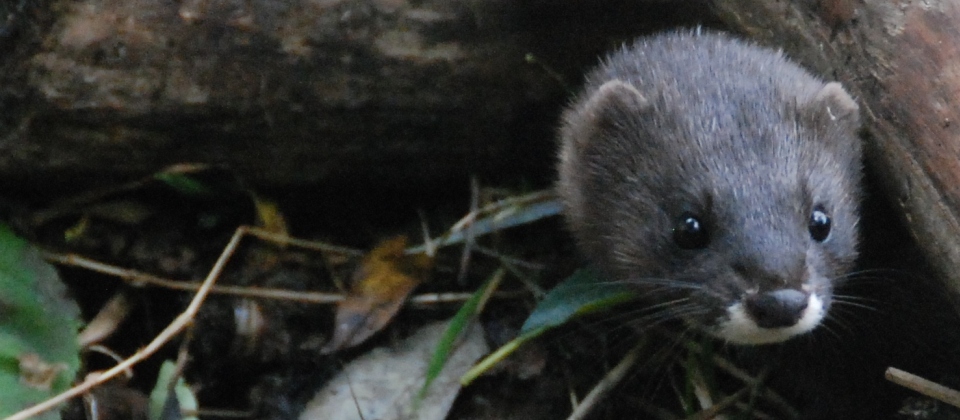1. Competition with the american mink (Neovison vison)
Over the last decades, the ecological competition with the American mink has been the main reason for the European mink extinction in Europe. Nowadays, the American mink expansion remains as the most critical threat to the last wild population of European mink in Europe.
Due to the direct competition for habitat and food resources, the American mink shift the European mink. There are also some evidences that this alien species can depredate on European mink and is the transmitter of Aleutian mink disease parvovirus (ADV). The American mink also affects other riparian mammals populations as the polecat (Mustela putorius), water vole (Arvicola sapidus), the pyrenean desman (Galemys pyrenaicus), and several species of birds, arriving in many cases to the extinction.
2. Population fragmentation and loss of genetic variability
The (French-Spanish) Western European mink population is hopelessly isolated from other known populations (Danube Delta, Russia). The size of this population is not more than 500 individuals; the hydrographic network in which it is present extends through an area of 30,000 km2. It has to take into account not only the small population size but also the isolation among the two populations (Spanish and French) as a result of severe scarcity of the species in France and the establishment of the American mink in the Aquitaine region.
Recently it has been found that the western population has less genetic variability than the eastern population due to what is known as a founder effect.
This situation suggests that in Spain there is a high probability that arise problems associated with low genetic variability, which are expressed in terms of survival and reproduction. In fact, the results of the European mink monitoring carried out recently, suggest that the European mink in Spain could have a lower reproduction rate than that observed in the eastern population.
3. Low social awareness for the conservation of the species and the river exosystem
The European mink has happened in just 30 years from being an unknown in our country to have a good base of scientific knowledge about their biology, which is also evident in the popular level, at least in regions where the species is present. However, this is not a flagship species and conservation issues and their habitat are not easily identified by the citizens, even for those who develop recreational or productive activities in the river area.
4. Condition of diseases (Aleutian Disease)
Of all the pathological processes that may be affecting the population of European mink, Parvovirus the Aleutian Mink disease (ADV), is probably the one with the greatest impact.
The spread of the virus is mainly due to the presence of specimens of American mink (escaped from fur farms) in the natural environment. This disease is a serious condition for which there are no preventive or curative treatments. Affecting more or less severely according to the viral strain, genotype mink and age at which infection occurs. The Aleutian disease has the potential to affect all populations of semiaquatic mustelids (mink, polecats and otters) present in rivers.
5. Habitat destruction
The European mink is a semi-aquatic carnivore link to the river ecosystem. The European mink is dependent on the mid and lower part of the rivers where the human impact is higher. In Spain, especially in the Mediterranean area the available area is scarce due to network forming regular water is less dense than the one founded in the Atlantic basins or regions of northern Europe.
The variation of channels and margins, destruction of riparian vegetation, drainage of wetlands and water pollution imply the loss of habitat quality for the European mink while increasing their vulnerability to other threat.
6. No natural mortality. Road casualties.
The linear layout of the European mink habitat, its especial behaviour and the degradation of the river ecosystems favour dead by road casualties in those points where road infrastructure crosses or run alongside them.
This threat, although cannot be considered as an important effect for the population, it can has a relatively important impact at local level or in small populations.



